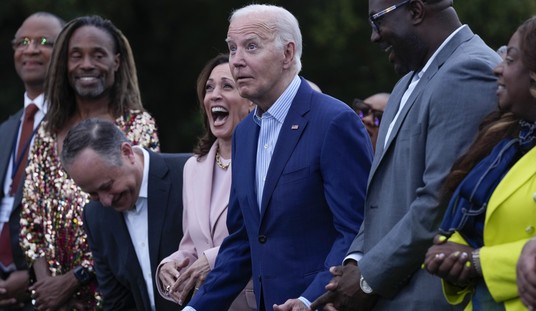Do you remember the Axis of Evil? It was one of the major themes of President George W. Bush’s State of the Union speech in 2002, 4 months after the 9/11 terrorist attack on the United States. The president identified Iran, Iraq and North Korea as an “axis of evil, arming to threaten the peace of the world.”
W was roundly criticized for the phrase. Some couldn’t figure out what North Korea was doing in there—we were smashing al Qaeda and the Taliban in Afghanistan at the time—while others, including Secretary of State Colin Powell, complained that Iran was being very cooperative and that Bush’s words were a gratuitous slap in the face of Supreme Leader Ali Khamenei. And even though Saddam Hussein was widely viewed as a monster, nobody thought he’d been involved in the 9/11 operation, and Iraq and Iran were highly partners in anything, having recently ended their long and very bloody war.
Yet Bush saw that all three countries were enemies of ours, were dedicated to developing weapons of mass destruction, and were willing to cooperate in order to expand their power and threaten the peace of the world.
The “Axis of Evil” went hand in hand with Bush’s analysis of the threat we faced: it was, he said, a combination of terrorist groups and countries that supported them. He promised that the United States would not distinguish between the two groups. We would go after the terrorists and their sponsors and allies. That we did it badly—Iran, not Iraq, was the logical target after Afghanistan, and political warfare, not invasion, was the logical method—shouldn’t blind us to the fact that it was already clear in early 2002 that we had to deal with multiple threats, and we’d eventually have to defeat them all or face a grim future.
Would that we’d kept that thought. Instead, we got the grim future.
We now face a more potent Axis of Evil that includes two of the original three (North Korea and Iran, with Iraq up for grabs), plus Russia, China, Cuba, Venezuela, Bolivia and other countries, and terrorist groups including al Qaeda, Hezbollah, and the Islamic State. With the exception of their hatred of the West, there is no single ideology that unites them. The new Axis includes Sunni and Shi’ite radical Muslims, Communists and other radical leftists, and nationalistic secular tyrants like Vladimir Putin. They have certainly succeeded in wrecking hopes for a peaceful world.
There is no escape from this war, whatever Western leaders might wish. We will either win it or lose it, and right now we are losing, most obviously in the Middle East and Central Europe, less dramatically in Africa from Somalia to Nigeria, and in Latin America where Iran is busily strengthening its cooperation with local autocrats.
How are we to cope with the new Axis of Evil? The winning strategy—long rejected by the current administration—is to directly challenge the rulers of the enemy alliance. In the Middle East, this means Assad and Khamenei. As in 2001, our greatest weapon against Iran is political: the Iran people. A huge majority of them detest the regime, as we have seen on several occasions, most notably in the monster demonstrations in 2009. We should support them, openly and vigorously, calling for freedom for the Iranian people, insisting on the liberation of political prisoners (including the Americans suffering in Iranian captivity), endorsing the legitimate demands of Iranian teachers, students, workers and opposition groups and parties. We should contact the leaders of these groups and ask them what they need, and we should transform VOA Persian-language broadcasting into the sort of critical reporting on events inside Iran that had such an effect on the Soviet Empire.
The new Axis hates us because American freedom threatens their own regimes; they hate us for what we are, not what we have done or are doing. We should use that weapon enthusiastically. You can see how deeply Khamenei and his henchmen fear it : they are now executing half again as many Iranians as they did when Ahmadinejad was president (and everyone viewed him as the worst of the worst).
With regard to Putin, our strategy must be to maximize his costs and strengthen his enemies in Europe and the Middle East. He’s convinced he’s got a free hand with Obama. We’ve got to demonstrate this is false, and demand our leaders take action. It seems we have finally decided to support the Kurds. If so, it would prove the wisdom of Winston Churchill’s great one-liner that America always adopts the best policy, after exhausting all the alternatives.
We can win this thing. But we’d better get at it fast. It’s getting worse right now.
UPDATE: Thanks to Instapundit for the kind attention. Whattaguy!









Join the conversation as a VIP Member